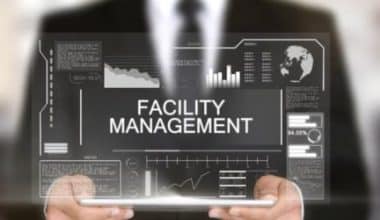Employee relations can form or break a company’s culture. In this post, we’ll look at the basic pillars of employee relationship management, as well as examples of employee relations gone wrong and effective practices.
What are Employee Relations?
Employee relations are the interactions between employers and employees. Organizations today strive to be more agile, faster, and transparent. As a result, the emphasis on employee communications is greater than ever.
Every employee relations plan seeks to promote workplace relationships and collaboration.
Good leadership is regarded as one of the most essential criteria in attracting new applicants and retaining current personnel. Employee relations, in this sense, frequently focuses on assisting line managers in actually connecting with their staff.
Employee Relationship Management (ERM) vs. Employee Relations
Employee relations refers to employee interactions inside a business, whereas employee relationship management refers to the process of building good relationships in the workplace.
When an employer oversees the relationships of all employees in the organization, this is referred to as employee relationship management. It includes the complete employee journey, beginning with an employee’s first day and ending when they depart the organization.
Employee relationship management is about more than whether you and your staff get along. Effective employee relationship management requires effective communication, employee engagement efforts, a structured employee experience plan, and the use of the appropriate tools and technology.
7 Reasons Why Employee Relations Matter
Companies that have positive employee interactions reap numerous benefits. In general, they find it simpler to engage, motivate, comprehend, and retain their people.
Here are just a few advantages of fostering positive employee relations in the workplace.
#1. Employee Engagement
According to research on employee engagement, 90% of leaders recognize the significance of employee engagement. However, only half of them know how to deal with this problem.
Employee relations are essential in this situation. Employee engagement is substantially higher in organizations with superior employee communications, according to research.
Here are some suggestions for improving employee communications in order to increase employee engagement:
- Review, revise, and share employee expectations.
- Encourage free communication in order to discover impediments and problems.
- Don’t overlook the importance of frequent feedback and praise.
- Encourage debate and the exchange of ideas.
You may wonder why you should be concerned with employee engagement at your organization.
#2. Employee Satisfaction
Employee satisfaction is frequently linked to employee engagement. Employee engagement levels are lower. Poor employee relations may be one of the primary factors.
Furthermore, 65% of US employees believe that employer communications have an impact on job satisfaction. 45% believe their organization does not communicate effectively with employees.
#3. Employee Productivity
Employee engagement and satisfaction increase employee productivity. Companies that have well-structured employee relations have increased productivity, revenues, and profitability. Furthermore, organizations with highly engaged employees have 2.3 times the average 3-year revenue increase as companies with less engaged teams.
If your staff knows exactly what their goals are and you provide them with regular feedback on their progress, they will work harder to achieve them.
#4. Retention of employees
One of the most serious issues that businesses confront today is high employee turnover. The expense of an employee departing is substantial. As a result, many employees want to avoid incurring that expense.
There are numerous approaches to boosting employee retention. One of them is employee relationship management. Employees who believe they are unaware of what is going on in the firm are frustrated and isolated. As a result, they are insecure and frequently ponder changing jobs.
#5. Employee Advocacy
Employee advocacy is a perk that many businesses strive for. The capacity to reach out to employees’ connections and fully utilize your company’s social capital can have a significant impact on the company’s exposure, brand recognition, and productivity.
Employers must be willing to develop employee relations in order to gain employee advocacy. They must keep personnel informed and offer critical information.
#6. Employee Experience
Employee experience, like employee satisfaction, is one of the most visible indicators of a strong workplace culture.
Employers must be willing to improve their communication with employees in order to provide a positive employee experience. Employees feel more involved when communication is open and transparent, which frequently leads to better employee engagement.
Poor employee communications, on the other hand, contribute to workplace insecurity, disengagement, and honesty.
#7. Employee Empowerment
Younger generations, particularly millennials, desire to be active in all parts of the company. They desire some sort of decision-making authority.
This is known as employee empowerment. It entails delegating responsibility and autonomy to employees so that they can manage their own work and make decisions to attain their own objectives.
You must have solid employee relations and communication methods in place to empower your personnel.
Employees must grasp your company’s objective and vision for them to feel empowered. They must also grasp how their work contributes to the overall success of the firm.
Trust is essential for effective employee empowerment. Managers who trust their staff and routinely convey the company’s vision and goals often have no trouble delegating additional authority to their personnel.
Employee Relations Examples
Employee relations problems include:
#1. Workplace Conflicts
Employee disputes and disagreements occur frequently. These are frequently the results of inadequate communication. An HR department or employee relations manager will never please everyone, but if conflicts arise frequently, low morale develops and the issues worsen unless managed.
#2. Workplace Bullying
When a minor disagreement evolves into bullying, you have a serious problem. Allowing this to happen on the job results in poor employee performance, increased absenteeism, and a negative brand reputation (not to mention legal action). Take bullying reports seriously and conduct investigations as needed.
#3. Workplace Safety
If an accident occurs at work, an employer may be held liable for any injuries, medical leave, or lost pay. Furthermore, the corporation will bear the hefty expense of reduced manufacturing. A primary employee relations priority is promoting and promptly addressing workplace safety issues.
#4. Hour Issues
When employees repeatedly complain that their hours are not being reported accurately (or when managers suspect dishonest hour tracking on the part of employees), it’s time to go into the details. Wage and hour breaches are against the law and must be addressed seriously.
#5. Pay Raise Requests
Turning down or rejecting pay raise requests is a certain way to create angry employees and high turnover rates. Even if you do offer competitive pay, carefully analyze each request to see whether there is potential for a raise (or other bonuses instead).
How Do You Tackle Problems With Employee Relations?
There are many different types of employee relations challenges, and how to tackle them varies based on the situation. There are, nevertheless, certain general standards to follow. One of them is to pay attention. Give your undivided attention to what is being spoken, both vocally and physically.
Another rule of thumb is to educate and communicate. The greater your employees’ understanding of the norms and expectations, the better. The goal here is consistency across the board. Nobody cares what you say if certain employees have advantages over others.
Finally, make a record of everything. When it comes to employee relations difficulties, keeping correct legal and employee records is critical. You will find yourself referring to them again and again. They will be especially important if an employee files a lawsuit against the corporation.
What Is the Distinction Between Human Relations and Employee Relations?
Employee relations fall within the purview of human resources. It refers to employer-employee connections and any measures or initiatives performed to sustain those relationships. Some organizations and businesses may have an employee relations team within HR, but in general, employee relations is one of the most important roles of any professional HR department.
Employee Relations Responsibilities: 10 Examples
One of the issues with employee relations is that they cover such a broad variety of topics. After all, “anything involving employees” is a broad definition. To help clear up any uncertainty, below are ten common examples of employee relations concerns and issues. It’s also worth noting that many of these obligations may be readily done by most of today’s recruiting systems if you require some technical assistance.
#1. Promoting Employee Engagement
Employee relations departments can stimulate employee involvement and interest through community-building events, advocacy for a life/work balance, incentives and awards, and professional development opportunities.
A pleasant working atmosphere is great for productivity, and happy employees work better than unsatisfied ones. Though there are numerous techniques available, from offering diverse physical settings to planning holiday festivities, businesses should always endeavor to keep their staff satisfied and healthy.
#2. Improving Communication in the Workplace
Companies can establish or break a good relationship with an employee based on communication quality. A good employee relations department will continue to strive to improve workplace communication, whether through the implementation of policies or the promotion of open conversations.
This is true for both company-wide and more intimate communications—for example, changes in corporate direction vs performance assessments. It can also apply to communications outside of the firm, such as those conducted through social media.
#3. Dispute Resolution and Conflict Resolution
People will always disagree with one another, it’s a reality of life. The higher the number of persons participating in the dispute, the greater the total discontent and, by extension, the impact on the workplace. The role of employee relations in situations like this is to address problems before they spiral out of control and negatively impact others. This is also true for any disagreements or concerns the employee may have with the organization.
#4. Taking Action Against Sexual Harassment and Bullying
Employees who have been sexually harassed or bullied (or who have observed it happen to another person) should report it to an employee relations department. The department is then in charge of investigating the claim, coming to a conclusion, and taking any required steps to address the situation and put an end to the harassment or bullying. Employee relations is also in charge of implementing any preventative actions, such as organizing anti-harassment training and developing anti-mistreatment regulations.
#5. Taking Charge of Health and Safety Procedures
A dangerous work atmosphere is a formula for disaster. Injuries and infrastructure damage can be terrible for both personnel and businesses. Employee relations must consequently raise risk awareness, provide proper training as needed, and develop company-wide protocols in the event of an emergency. First aid training and fire evacuation techniques are two examples. If an injury or accident occurs, the department is in charge of medical leave and compensation.
#6. Handling Wage Issues
Wages, like health and safety protocols, are handled by an employee relations department, as are hours and expectations regarding remuneration or shift work. Attendance, remuneration packages, timekeeping, and vacation days are all examples of this. Wage disputes pay rise requests, and annual reviews or performance incentives are normally handled or communicated by the department. Employee relations is also in charge of ensuring that both employees and the corporation are in compliance with state and federal wage regulations.
#7. Clarification of Company Policy
Employee relations is responsible for providing answers to employees who have questions about corporate policy. They should also address any pertinent policy issues or comments, and communicate properly if the policy is altered or modified.
#8. Investigations in the Workplace
Any scenario requiring additional inquiry, such as complaints of harassment or misbehavior, will fall under the purview of an employee relations department. Unless it is necessary to involve outside parties (e.g., law enforcement), the department will usually undertake these inquiries internally. Employee relations will also coordinate any actions done following the conclusion of an investigation, such as a “recognizing sexual harassment” course.
#9. Employee Union Communication
Employee unions often elect a representative who is in charge of communicating with the employer. The corporation must then find an internal liaison to communicate with the liaison. This position is often held by someone in an employee relations department. This relationship serves as the primary point of contact, collaborative or otherwise, between a union and a firm, and may include responsibilities such as pay negotiating, employee rights, and arranging meetings between unions and higher management.
#10. Overall Employee Morale and Performance Monitoring
Employee relations departments must frequently analyze employee morale and performance to determine whether efforts are effective. Employee relations may track the corporate atmosphere and hopefully settle any growing unfavorable feeling before it becomes too out of control by opening up options for reviews and feedback—both anonymous and face-to-face.
Some employee relations departments like to perform these assessments in an orderly and data-driven manner, whilst others (particularly smaller firms) may choose a more conversational approach. The outcomes of these sessions can assist employee relations departments in deciding which areas or problems to focus on and which current programs to reduce or maintain.
What Is the Definition of an Employee Relations Strategy?
An employee relations strategy is a method of achieving a balance between employers and employees by establishing an atmosphere that meets both of their demands. Employers seek productivity and performance; employees seek recognition and gratitude. A solid employee relations plan will assist both parties in achieving their objectives.
At the very least, your approach should incorporate the following KPIs:
- The number of awards received
- The total number of complaints
- The time it takes to respond to a complaint
- Data on quarterly benefits and compensation in comparison to competitors
- Employee contentment
- Employer effectiveness
Employee Relations Techniques That are Commonly Used
Even with a fully staffed and well-trained department, managing employee relationships is a massive task. Here are some tried-and-true tactics and ideas for creating a happy, healthy workplace.
#1. Encourage teamwork and cooperation.
Many tactics can be utilized to establish a cooperative and collaborative workplace climate, including projects combining multiple departments, teams comprised of a mix of personnel, regular team meetings, and scheduled communal lunch breaks.
#2. Ensure that communication is clear, timely, and relevant.
Nobody wants to hear about a round of layoffs through Twitter or a coworker, then have to wait a week before a corporation publishes an official statement… promoting the new sales product. Make sure that communication is exact, direct, timely, and attentive to any issues that employees may have. Encourage free communication between and among employees and supervisors.
#3. Establish and explain organizational objectives.
Operating in the dark can be unsettling for an employee. It can be encouraging to know what an employee is striving toward, yet receiving invitations to company retreats with no defined goal might be annoying. Communicating the logic and goals behind actions, strategies, and initiatives will assist employees create trust and loyalty in the company’s mission.
#4. Put in place proper policies to reduce conflicts.
A large part of employee relations is predicting an issue and developing a plan to address it far in advance of the problem occurring. Clear anti-harassment policies, for example, with specific definitions, examples, and sanctions, can help employees be more conscious of their interactions and actions. A wage dispute method, on the other hand, can aid in the resolution of the disagreement promptly and efficiently.
#5. Respond to any matter swiftly and fully.
It’s critical to take a bullying allegation, a request for a pay raise, or a complaint about company policy seriously. Make an employee wait for a response or dismiss concerns, as this may make gaining their trust impossible. It may also have an impact on the company’s reputation.
#6. Make it possible for employees to provide comments.
An employee is more likely to feel unsatisfied if they believe they are merely another gear in a corporate machine with no say in what occurs. Provide regular opportunities for employees to provide constructive input on the company’s direction and policies.
#7. Provide career guidance and professional growth.
Most employees will wish to start exploring promotion prospects after a few years in the same role, whether at their present firm or elsewhere. A solid employee relations department will help people advance within the organization. Similarly, they will provide opportunities for professional growth to all staff on a regular basis.
#8. Celebrate special occasions and holidays.
Birthdays, weddings, newborns, religious holidays, nondenominational seasonal parties—the possibilities for celebration are endless. Of course, there’s no need to go above and beyond for each event, but tiny tokens of appreciation, such as a birthday cake or card, are appreciated; just make sure to consult any individual before calling attention to them. The extra attention is not appreciated by everyone.
#9. Plan social gatherings outside of work.
Because not every employee will want to engage outside of work, be sure to ask what they’d like to do and avoid mandating any extracurricular activity. A smart strategy is to organize non-mandatory events, such as kickball teams or happy hours, and then let those who are most interested become part of the organization. In this manner, interest and community growth can happen naturally rather than feeling forced by the firm.
#10. Encourage all employees to maintain a good work/life balance.
Employees who are frequently subjected to last-minute schedule changes, difficult deadlines, overtime-required workloads, or unpredictable hours are unlikely to stay.
While the tactics listed above are effective for boosting employee relations, keep in mind that they are also broad. Any corporation that takes a truly successful approach to employee relations will have tailored a plan to its own needs. Don’t be hesitant to try a few things to see what sticks, but keep an open mind when it comes to modifying policies and strategies to remain responsive to employee needs and interests.
What Are Some Examples of Employee Relations Problems?
Bullying, confrontations and disputes, sexual or verbal harassment, attendance and salary problems, alcohol or substance misuse, and internal career growth are all examples of employee relations challenges. Though this is hardly a comprehensive list, you can presume that any conflicts between an employee and an employer—or between employees—fall under the umbrella of employee relations.
Conclusion
Employee relations are an essential component of any firm or organization’s long-term success. An employee relations department handles everything from conflict resolution to salary issues to health and safety concerns to increasing employee morale. A corporation that has a strong employee relations infrastructure will struggle to deal with any of these issues, with predictable negative results.
There are numerous techniques for developing a favorable dynamic between employers and employees, but respect and clear communication are essential in any healthy partnership. While creating a positive work atmosphere is difficult, it pays off in terms of employee retention, productivity, satisfaction, and success.
- HUMAN RELATIONS: Meaning, Theory, Workplace, Commission & Importance
- COMMUNITY RELATIONS: Benefits, Types, and Full Job Description
- PUBLIC RELATIONS MANAGER: Definition, Duties, Salary & Requirements
- Highest Paying Management Jobs
- Public Relations Specialist: What They Do, Salary,& Becoming One






